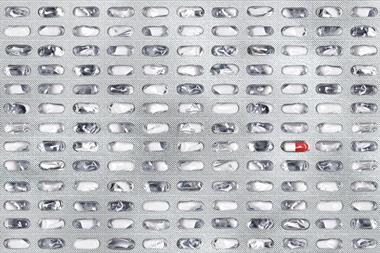A world without antibiotics would be a terrifying place
Life would be very different without antibiotics. In my own life, if simple treatments for bacterial infections weren’t available, then the osteomyelitis that infected my shoulder when I was a young boy would have required surgery to remove the necrotic bone, perhaps even amputation. My cousin would not have lived into her 40s with cystic fibrosis. My brother would have been far less likely to survive his recent surgeries. And his twin sons, born many weeks premature, would have died from sepsis when their barely formed bowels perforated inside their tiny bodies. They are both grown men now.
I could go on. You and everyone you know have stories like these; thanks to antimicrobials, they are commonplace. Generations of people have benefited from the safety of small molecule drugs that can cure infections, and those drugs have transformed medicine. Yet the rise of resistant bacterial strains caused by overusing and misusing antibiotics mean that a post-antibiotic era is now a realistic prospect. In this collection, we’re looking at the ways chemistry is helping to solve the problem of antimicrobial resistance (AMR).
Antibiotics are one of chemistry’s greatest contributions to humanity. And their importance shaped what chemistry has become. In the 20th century, developments in medicinal chemistry and organic synthesis were driven by finding these molecules, solving their structures, understanding their activity and reconstructing them in the lab.
The very principles of chemotherapy and drug discovery were established with antibiotic research. Paul Ehrlich discovered Salvarsan (the first cure for syphilis) in the 1900s by systematically synthesising and screening a huge library of molecules – that approach is still standard practice in drug discovery over a century later. And penicillin’s success led to industrialised natural product research. Pfizer was just a small chemicals supplier before it helped to mass-produce penicillin – the rest is history.
Pharmaceutical companies invested heavily in antimicrobial R&D in those early years and for a period it seemed that all we had to do was keep turning over stones to find the next one. As the rate of discovery dropped, however, failures and false starts meant those companies began to struggle to sustain the huge costs. The traditional model of recouping investment through patent exclusivity also began to falter because the best, most effective drugs have to be kept in reserve. Without returns to justify the investment, many companies stopped looking. The already depleted pipeline began to dry up entirely, and all the while our overreliance on existing antibiotics was creating drug-resistant superbugs.
The problem is now so severe that, according the World Health Organization, antimicrobial resistance could be the leading cause of deaths worldwide by 2050 and its impact on the global economy is predicted to be $100 trillion. In this collection, we talk to the companies who are trying to restock the development pipeline to make sure that doesn’t happen. But finding new drugs is only part of the solution – we also need new ways of paying for these vital medicines. Another feature looks at the new models and incentives that are emerging to encourage drug developers into antibiotic R&D. And alongside the scientific and economic solutions, societal changes are also required. Our webinar on 20 September will look at how holistic approaches to improving public health such as sanitation and vaccination can ensure that we make best use of our precious resources.
The reality is that many people already live in a world where the medicines that have changed my life are not available – it is those countries that will be hit hardest by AMR. And as Covid proved only recently, diseases don’t respect borders; a threat somewhere is a threat everywhere.

















No comments yet